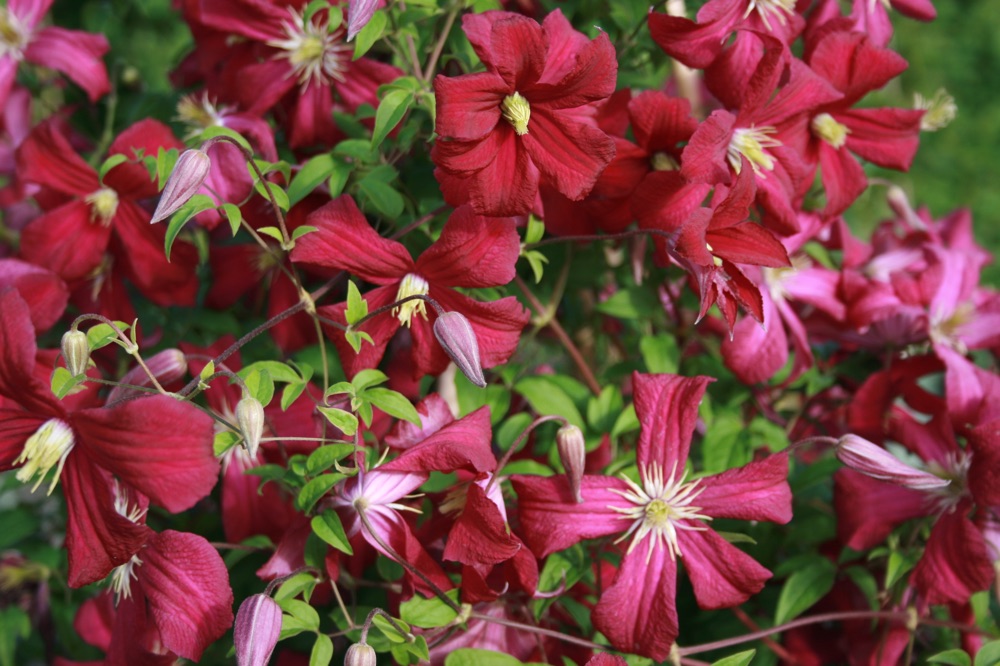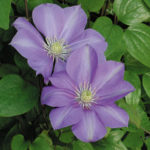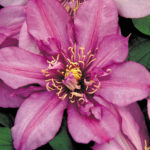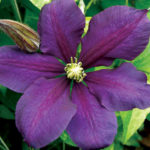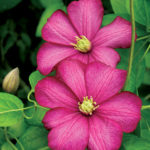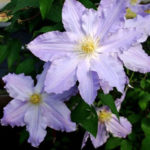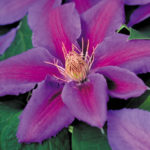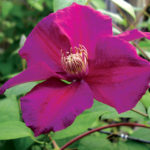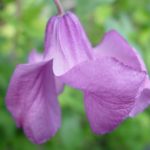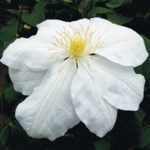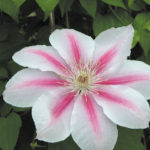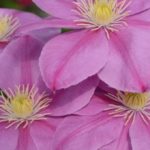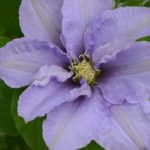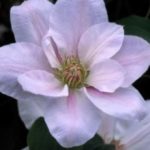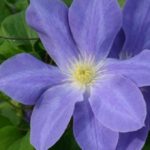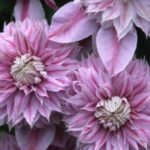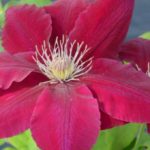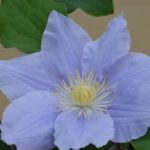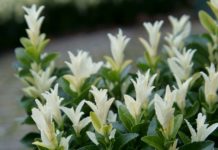Your guide to clematis
Every garden should have a few clematis. I have at least five kinds in different parts of the garden.
I used to have several more but over the years I have replaced them – pyracantha instead of clematis around an arch, for instance.
People fall madly in love with clematis. It isn’t called the Queen of Vines for nothing.
I was once in a garden here in Vancouver where the owner had planted 17. Imagine. That was the most I’ve ever seen in one garden. They were all planted in a row along a fence.
In recent years, I’ve taken to planting clematis in containers.

This is partly due to a conversation I had with English clematis guru Raymond Evison who always puts on such a marvellous show of growing clematis in containers in a pyramid form at the Chelsea Flower Show.

He persuaded me to have a go at growing some of his shorter, patio-type varieties bred specifically for growing in containers.
You can learn more about Raymond and his many successful hybrids at his website here.
You’ll have no problem finding a grand assortment of clematis this spring at most garden centres.
Some of the best ones have been around for years like Jackmanii, Nelly Moser, Ville de Lyon, Bees Jubilee or Nelly Moser.
For a time, I was smitten by perennial clematis and I planted a good one called Pamiat Serdsta.
I’ve also planted quite a few vigorous montana clematis. Fragrant Spring and Broughton Star are still doing well in my garden.
It is also very cool to grow clematis into shrubs, such as a red variety like Ville de Lyon or Madame Julia Correvon into a purple smoke bush or a rampant montana clematis into a high conifer.

HOME OF CLEMATIS
Here in British Columbia, the biggest grower of clematis is Clearview Horticultural Products, of Aldergrove, a nursery owned by brothers Rob and Fred Wein and developed by their father, Fred. Sr, a gifted hybridizer and grower, from the 1970s.
Pretty much everything I know about clematis I learned during interviews with the Weins. They are excellent teachers.
They taught me about how to plant properly – deeply, at least 18 inches – and not to be afraid of covering up the lower stems a little when you do it.
SPRINKLER DANGER
Rob also once explained how sprinklers kill more clematis than anything because they promote fungal diseases. So, it is always good to keep your clematis away from being sprinkled during summer.

As for pruning, it is a bit complicated, but not hugely so.
Basically, it all comes down to getting the timing right.
If you have an earlier bloomer, such as C. alpina or macropetala, you don’t prune it until it has finished flowering.
One likes Nelly Moser and Dr. Ruppel are called B-types – you can see this on the label when you buy – and these get a light pruning after they flower which encourages them to flower again later in summer.
C-type clematis are the easiest and most popular types, flowering from June on. Jackmanii is one of these. The President and Polish Spirit are two other very popular types.
But don’t worry about pruning. Just clip when you think you need to tidy up.

